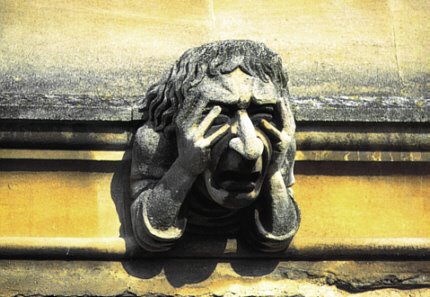10th Anniversary, 5th Biennial British Shakespeare Association Conference
 24-26 February, 2012, Lancaster University (closing date for proposals: 1 Oct)
24-26 February, 2012, Lancaster University (closing date for proposals: 1 Oct)Shakespeare Inside-out: depth / surface / meaning
Shakespeare's texts produce meaning by turning insides out. We are drawn into
the plays and poems from the outside through surfaces: books, screens, words,
objects, costumes, the surfaces of actors' faces and bodies, retellings or
adaptations, teaching spaces and theatres, and via
our experiences of immediate effects like music, laughter, tears, movement. The
texts, meanwhile, turn deep human questions, emotions, subjectivities outwards
by projecting them as words and performance. This conference will ask how the
relationship between surface and depth
operates in Shakespeare's work. How does it function in different types of
performance practice from live theatre to film? In the traces of the past that
have come down to us? And in our practices as teachers and critics? The
conference will explore 'the deep value of surfaces' (Shusterman), the dynamic
relationship between surface and depth across a range of practices: reading,
watching, editing, teaching, performing. While postmodernism's defining feature
is supposedly 'the emergence of a new kind of flatness' (Fredric Jameson),
early modern constructions of inwardness, or 'depth', have been the subject of
some brilliant work on emotion, the body, subjectivity and psychological
character. We will investigate how multi-layered surfaces offer different ways
to get inside Shakespeare's texts, to access cognitive, emotional and
psychological depth. We will consider how, alternatively, spectacular and
brilliant surfaces may block such routes, emptying out texts /
bodies / performances and reflecting only those who watch or produce them in
different ways. Contemporary culture and economic recession arguably frustrate
our pedagogical preferences for 'deep' rather than 'surface' learning.
Proposals for panels, papers, workshops or presentations on any aspect of the
topic are welcomed from across the membership of the BSA by 1 October 2011
(a.g.findlay@lancaster.ac.uk)
Questions we might address include:
•How are emotions represented, invoked and experienced in and through
Shakespeare's texts?
•How do superficial artefacts used in performance or printing such as costume
and props, illustrations, type, decorations, act as 'talismans' for different
kinds of engagement with Shakespeare?
•How do rituals and ceremonies in Shakespeare work as superficial orderings of
emotion and violence?
•Do Shakespeare's texts offer 'deeper' rewritings of source texts or do the
inter-textual relationships themselves deserve more in-depth study than they
have received to date?
•How do adaptations or retellings of Shakespeare act as gateways to and from the
texts?
•Does music in Shakespearean performances add depth or is it the 'icing on the
cake'?
•How much deeper can we dig behind the fairly sparse documentation of early
modern theatre practices -- playing and watching?
•Does learning about Shakespeare happen on an immediately-measurable level or at
more intangible cognitive, affective and spiritual levels or both at once?
•Is it possible (or even desirable) to quantify what goes on as the result of a
performance, a film, a teaching session?


0 Comments:
Post a Comment
<< Home